India’s Killer ‘Godmen’ and their Sacrificial Children and Adolescence
by
Robert Gorter, MD, PhD. and Guru Bar, Msc.
June 9th, 2021
A new law is aimed at stopping self-styled holy men from murdering and mutilating children to gain divine favor, but widespread ignorance and blind devotion still fuel the ritualistic killings
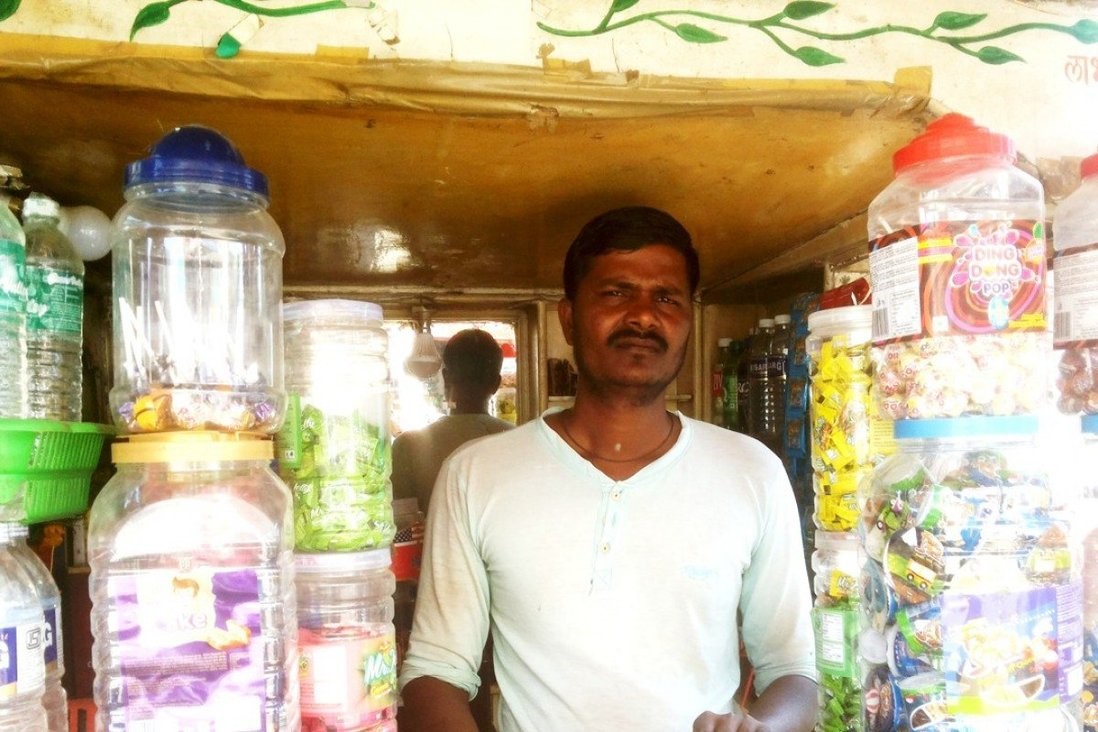
Hiram and Mule’s son Rupesh, 9, was killed in a ritual (Satanic) sacrifice. (Photo: Handout)
After her six-year-old son went missing in January 2017, Sarika Ingole, a homemaker, scoured every corner of her village in the western Indian state of Maharashtra to find him. But when Krishna, a class one student, was found 18 hours later, she chose not to look at him. The boy’s mutilated corpse was left only a few meters away from his home. His clothes were torn, his belongings missing and his eyes had dozens of marks from needle piercings under them.
“They had slit his throat with a knife,” says Gouraba, 45, Krishna’s father. “And they had made a hole in the back of his head, as if with a drill machine. When we found him, we couldn’t believe someone could put a child through such barbarity – more astoundingly, why?”

Krishna Ingole, age 6, murdered (sacrificed) by Godmen (self-declared Priests) to please the Gods
Police investigations found the crime had been perpetrated at the behest of Krishna’s 40-year-old paternal aunt, Draupadi Pol. The accused, a tantric or holy man, had kidnapped the boy from near his home, stuffed a cloth ball into his mouth, bundled him into a jute sack, and a few hours later, slit his throat. The murder was an act of human sacrifice – committed to gain the favor of a goddess Kali.
“Draupadi had approached a tantric passing by her village. She told him her home had been robbed of peace since her husband would often fight with her. He advised that if she could hack a young boy, and offer his blood and flesh to the goddess, the deity would be pleased, and harmony would be restored,” says Kiran Sagar, 53, a professor and social activist in Maharashtra’s Osmanabad district, where Krishna lived.
A few feet from the boy’s body, investigators found ingredients gathered for the sacrifice ritual – human skulls, bones, pictures of the Hindu goddess Kali, sandalwood paste, incense sticks, and ghee. They also found a pit dug in the ground, where Krishna was to be buried.
“Draupadi had been digging that hole for a week before my son went missing,” says Sarika, 30, “When I asked her what it was for, she said she was building a temple. I’d helped her with the work. I didn’t know I was digging my own son’s grave.”
Draupadi, the tantric, and their four accomplices are facing trial for Krishna’s murder under the Maharashtra Prevention and Eradication of Human Sacrifice and other Inhuman, Evil and Aghori Practices and Black Magic Act of 2013.
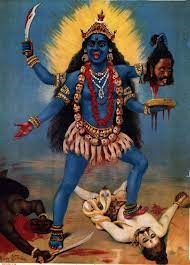
One of many aspects of the Goddess Kali

One of many aspects of the Goddess Kali

A devotee performs a ritual during a religious procession of the Bhel Bhel festival in Bandel, some 60km away from Calcutta, India. Faithful Hindu devotees offer various rituals and symbolic sacrifices, but there are many grim examples throughout India of so-called ‘holy men’ who persuade people to actually kill children to please the gods. (Photo: Xinhua)
In the four years since the publication of this first criminal legislation act against human sacrifice in the country, Maharashtra has registered at least seven murders connected to the practice. Eight other attempted sacrifices were prevented in this time.
According to Sanal Edamaruku, president of the Indian Rationalist Association, India is home to thousands of practicing tantric who perform the ritual.
“There’s not one Indian state devoid of the crime. The practice is most prevalent in the eastern part of India – West Bengal, Jharkhand, east Bihar, and eastern Uttar Pradesh – where rituals connected with sacrifice were integral to culture in medieval times. Meanwhile, southern India, which has seen more reformist movements against superstitions over centuries, has a lesser frequency.” But still…….
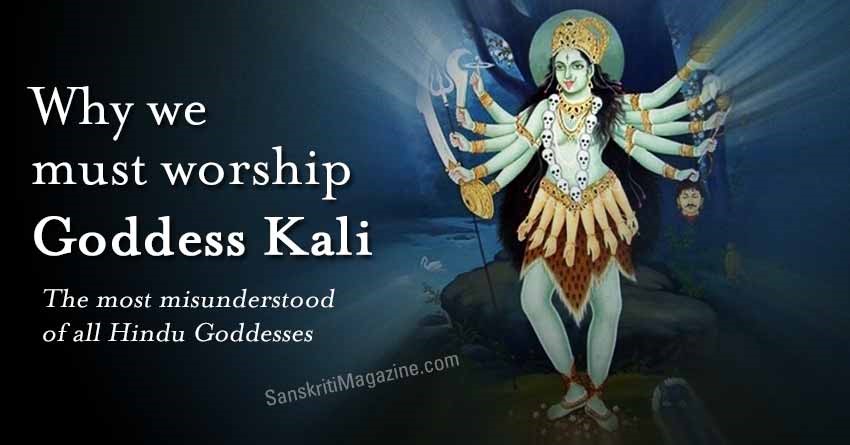
The National Crime Records Bureau (NCRB), an office attached to the Indian Ministry of Home Affairs, started collecting data on human sacrifices from 2014 on and reported that 51 such murders took place in 14 of 29 Indian states between 2014 and 2016. The highest numbers were reported in Uttar Pradesh (nine) and Jharkhand (eight), while Maharashtra, during the same period, reported two.
But how many stay unreported or even hidden on purpose?
“The figures are understated,” says Hamid Dabholkar, son of rationalist Narendra Dabholkar, a pivotal figure behind the legislation in Maharashtra who was assassinated in 2013. “Between the end of 2013 and 2016, our organization, Maharashtra Andhashraddha Nirmoolan Samiti (MANS) has recorded at least seven murders related to human sacrifices – as opposed to two recorded by NCRB. This discrepancy is because the motive of sacrifice hardly gets identified unless the murders are perpetrated under extremely suspicious circumstances, say, internal organs of the victim were removed, or ritual ingredients were found on the spot.”
According to Avinash Patil, president of MANS, recent cases in Maharashtra were perpetrated to gain the favor of goddesses Kali to bring peace upon homes, locate hidden treasures, ward off the “evil eye”, and facilitate “showers of gold”. He says the practice of human sacrifices is largely associated with the cult of Tantrism, a spiritual movement that originated in medieval India. Abraham Eraly, in his 2011 book, The First Spring: The Golden Age of India, noted that the cult enjoyed its widest popularity in 8th century India, and many tantric rites involved blood sacrifice, human sacrifice, and ritual cannibalism.
“Human flesh is considered as maha prasad (great oblation) in Tantrism. Kalika-Purana, a Tantric text from the 12th century, has an entire chapter on the procedure of human sacrifice and it states that the sacrifice of a man would keep the goddess Kali pleased for a thousand years. Devotees subject their victims to a lingering death, preferably under prolonged torture, as by this means the flesh, blood, and bones are believed to be properly confected.”
In today’s satanic sacrifices, the same happens: children and adults are tortured to death; often undergo also sexual practices which are extremely sadistic. Some child survivors in the Western World who amazingly survived have been well-documented witnesses by police investigations.\

The family of Krishna Ingole, the six-year-old boy who was killed in an act of human sacrifice in 2017 in Maharashtra, India. (Photo: Handout)
Deepak Sarma, professor of religious studies at Case Western Reserve University, Cleveland, USA, however, argues that references to human sacrifices were made much earlier in the Rigveda, one of the oldest Indian religious texts, likely penned between 1,500 and 1,000BC. “In the Rigveda, a cosmic man is sacrificed in order to generate the universe, and the social and caste systems,” he says, adding that contemporary tantric verses who perpetrate human sacrifices, are “antinomian elements”, and have been misinterpreted by the tantric tradition.
“Tantrism involves initiations that concern the purification of the body through body mortifications, internalizations, and mantras. There are accounts of tantric who eat human flesh, but this is mainly at funeral pyres – no one is killed in the process. Contemporary tantric, who kill people as a sacrifice, are psychopaths, who are portraying themselves incorrectly,” he says.
Why the world needs to sit up and take notice of India’s war on meat
Patil says victims of human sacrifices are usually poor, disabled, or belong to weaker sections of society – people whose disappearances are more likely to go unnoticed. There is a preference for boys, aged three to 12 years; but tantric also take girls who have just started menstruating, and children who were breech babies.
“When these children are sacrificed, they’re usually mutilated. Their ears and nose are sliced off to unleash streams of blood, which is collected in vessels and offered to the goddess and/or consumed by the priest. In Krishna’s case, a hole was drilled into his head to facilitate this. Several tantrics are known to drink the blood during the ritual, which is usually performed on the new moon and full moon nights. There have also been cases where the accused savored mutilated organs after boiling them.”
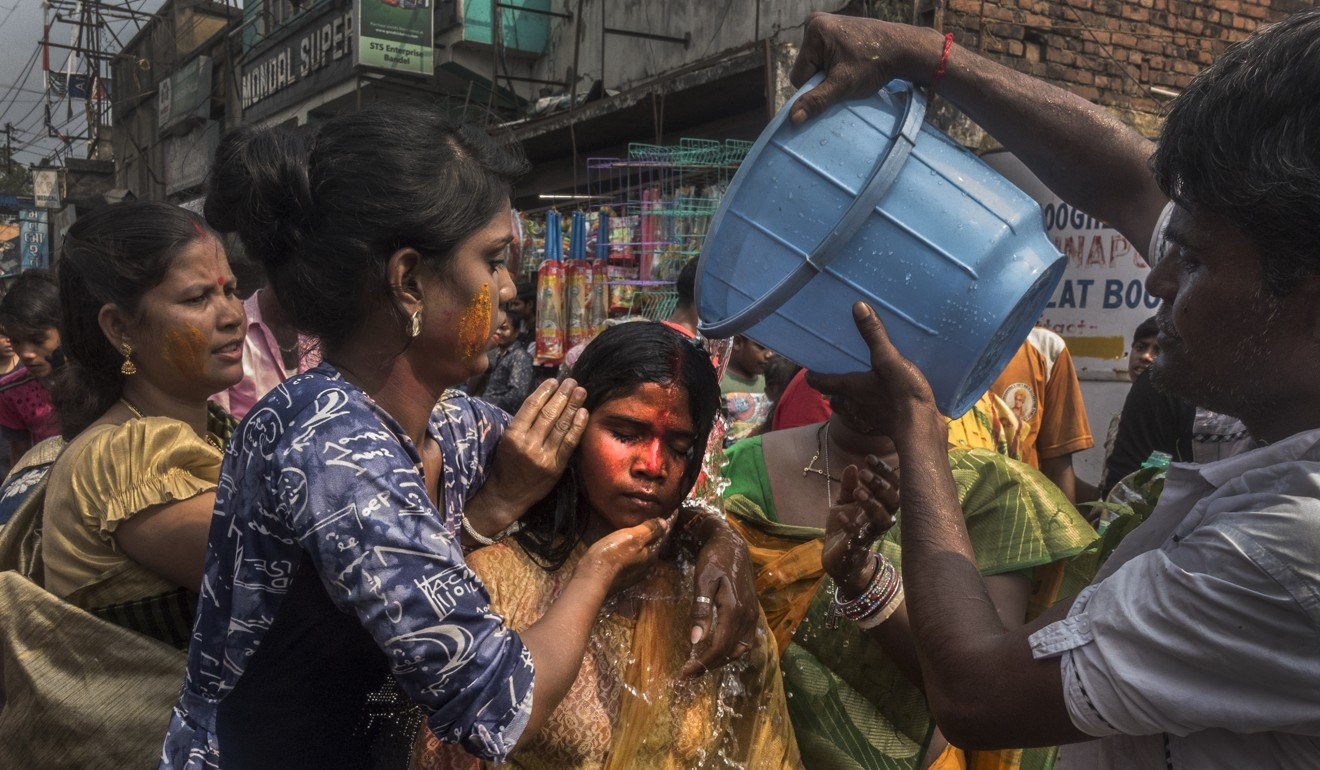
Hindu devotees perform a ritual during a procession near Calcutta, India. While such rituals, including symbolic sacrifices, are common among the faithful, a new law in Maharashtra aims to stop the actual human sacrifice. (Photo: Xinhua)
Although Maharashtra is the only Indian state with legislation against human sacrifices, advocate Ranjana Gavande, who has been working to create awareness against the practice in Maharashtra’s Sangamner district, says the prevalence of the crime continues. Many are unaware of the relatively new law.
She says awareness is poor among law enforcement agencies, and often such cases are met with “shoddy” investigations.
Gavande cites the example of Rupesh Mule, 9, who was killed as a sacrifice in November 2014, by a tantric wanting to locate a hidden treasure in Maharashtra. Nine people were accused of kidnapping the boy, removing his kidneys and heart, and dismembering him. Tantrics allegedly consumed the organs while chanting mantras. A court acquitted the group in 2017 (!).
“I saw my son’s body,” says Rupesh’s father, Hiramand, 32, “They had carved his organs out with the precision of surgeons and butchers. But despite the evidence, including confessions of the accused, the case didn’t stand in court. All these people, who killed my child, were let off. I’ve filed an appeal in a higher court, but I’m not very hopeful.”
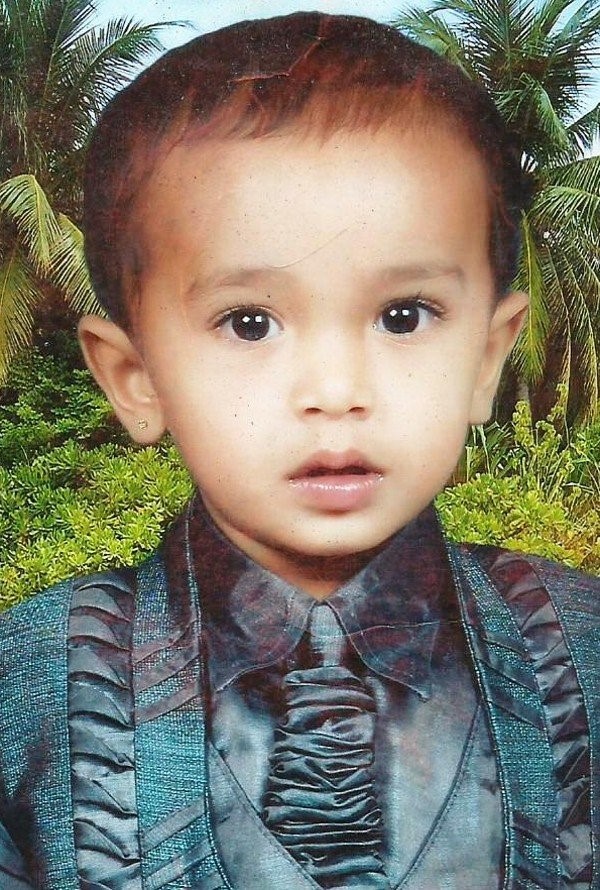
Sanjit Bhondve, at age 4, was killed in an act of human sacrifice. (Photo: Handout)
Gavande says that although the state government enacted the law four years ago, there are no specialized police officers to implement the legislation; and the on-ground staff lacks knowledge about religious beliefs and resultant crimes.
“Policemen don’t know that superstition-oriented crimes like human sacrifices exist, and are reluctant to probe the angle when we insist. In Mule’s case, for example, they assumed the case was that of organ theft until activists intervened, and the accused confessed.”
Hamid says: “Although India is now a rapidly emerging global economy, religious faith makes for a large portion of its social fabric. To exploit these beliefs, thousands of tantric and self-styled ‘godmen’ have set up shop in every city and village here. These men claim to possess supernatural powers, convince others that they are divine reincarnates through bogus magic tricks, and dupe scores of people every day. In fact, public faith in these con men is so strong that resistance has grave repercussions – my father was shot dead.”
Mumbai-based sociologist Nandini Sardesai agrees. “Blind adherence to godmen is integral to our cultural ethos. We’ve been brought up to think they’re messengers of God, and crimes perpetrated by them hence have religious sanction. That’s why, even today, people all over India fall for their claims and end up as victims or criminals.”
Edamaruku of the National Science Centre in New Delhi, says the prevalence of human sacrifices in India can be gauged from the number of missing children in the country.
According to the latest figures from the National Crime Records Bureau, 55,625 minors were missing in India in 2016 alone, of whom 34,814 were girls. “Many of the missing children are eventually found murdered and mutilated. And the crime goes beyond the urban-rural, rich-poor, and literate-illiterate divides. All sections of society are known to have participated in the practice.
“The solution here isn’t just education; it’s building of scientific temper,” he said.
Even as activists clamor to raise awareness about human sacrifices, Satish Mathur, the director-general of police for Maharashtra, feels there is an urgent need for change.
“The Indian law makes it extremely clear that murder is a crime. Why do you need to specifically tell people that murders for sacrifice are illegal too?”
Hamid, however, feels there’s a “pressing need” for a national anti-black magic law, modeled on the Maharashtra Act, as evidence for such heinous crimes mounts.
Sanjay Bhondve, 35, lost his son Sanjot, 4, to human sacrifice in Maharashtra in 2016. Blonde says that on the morning of April 4, Sanjot left with a neighbor, Sachin Pingle, 38, and never returned. Single is on trial for the boy’s murder.
“We found my son’s body in the water tanker in his home. Before my boy was murdered, Pingle would keep telling me that sacrificing children could please gods and that it could make homes prosper and bless generations of the devotee’s family with the riches of a king. I never believed he was serious – not until I got down into that tank, and discovered my son’s lifeless body.
Andhra Pradesh mother sacrifices 2 daughters, says ‘the will come alive as satyuga starts from Monday’
A mother killed her two daughters using dumbells in the Chittoor district of Andhra Pradesh. When inquired about the incident, parents of the two girls said their daughters will become alive again as “satyuga” starts from Monday

a shocking case of human sacrifice, a mother clubbed her two daughters to death on Sunday night in Madanapalle town of Chittoor district in Andhra Pradesh.
The accused, Padmaja, used dumbbells to kill her two daughters — identified as Alekhya (27) and Sai Diviya (22). Her husband was also an accomplice in the murder.
When inquired about the incident, said their daughters will come alive again after the sunrise — as “Kaluga” will end and “satyuga” will start from Monday.
Padmaja and her husband, Purushotam Naidu, work as principals in a school.
Alekhya, the elder daughter of the couple, had completed her Master’s degree in Bhopal, while the younger daughter, Sai Divya, was a BBA graduate. Divya was also a student of AR Rahman Music School in Mumbai and had returned home during the lockdown.
Police said the couple was behaving strangely during Covid-19 lockdown and particularly on a Sunday night. Neighbors called the police after hearing strange noises and cries from the house.
When police tried entering the house, the couple resisted. But when they finally forced themselves into the house, the crime scene left the police in shock.
The body of one of the girls was recovered from the “pooja room” and another body was found in the other room. The bodies were covered in red clothes.
Officials investigating the case suspect that both the deceased girls were brainwashed by the parents and the Godmen and that they also believed in reincarnation. It is suspected as Alekhya (age 27) used to share videos of her singing on Instagram and in one post, she wrote: “Shiva is coming soon.”
http://www.scmp.com/week-asia/socie…-killer-godmen-and-their-sacrificial-children
http://robert-gorter.info/britains-child-migrants-told-going-picnic/
http://robert-gorter.info/missing-childrens-statistics/
http://robert-gorter.info/least-100000-victims-modern-slavery-just-uk-alone-40-million-globally/
http://robert-gorter.info/slavery-hypocrisy-still-alive/